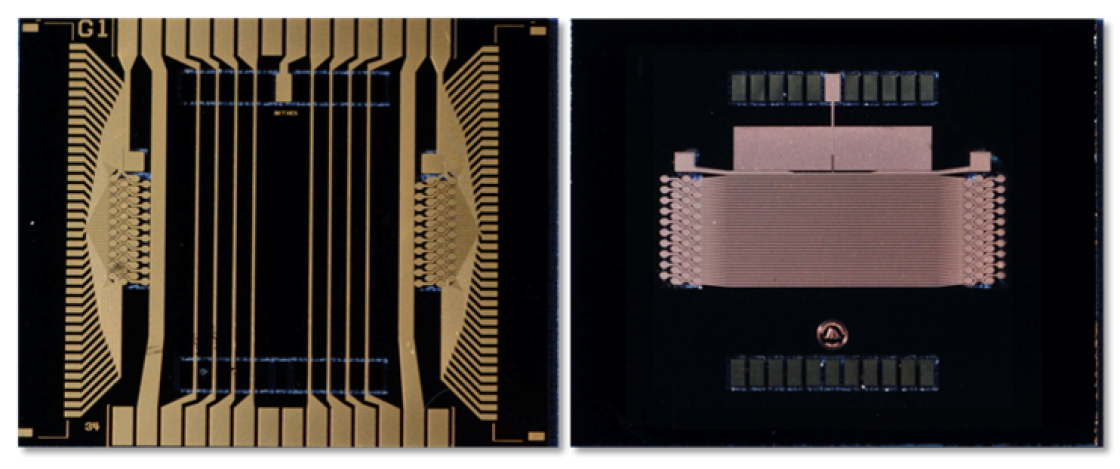The goal of this project is to demonstrate an ultracold atom gyroscope sensitive enough to detect the Earth’s rotation. To do this we trap 87Rb atoms in a cigar-shaped, high frequency magnetic trap created from an atom chip depicted below. We then cool the atoms to degeneracy and use a Sagnac interferometer geometry to perform the inertial sensing.

In regards to the inertial sensing, we first split the atom cloud into two opposite, quantized momentum states using a series of π/2 pulses. Following this we use a series of transport wires patterned on our atom chip as an atom conveyor belt to the move the two atom clouds through an equal path length prior to recombination. Due to the momentum kick imparted by the laser pulses, the two atom clouds spread apart from one another and enclose a finite area as they are moved along the conveyor belt. Note that to recombine the atom clouds a second series of π/2 pulses is used after the atoms have been transported halfway along the conveyor belt. The recombination results in an interference pattern from which any path length difference between the two atom clouds resulting from rotation can be detected.
While interferometry using photons, or even cold atoms, is not a new area of research, Bose-condensed atoms allow for much greater degrees of sensitivity. This increased sensitivity means that ultracold atom Sagnac interferometers can be made significantly smaller than their laser-based counterparts because a much smaller enclosed area (i.e. square millimeters versus square meters) can be used to achieve greater precision.
While interferometry using photons, or even cold atoms, is not a new area of research, Bose-condensed atoms allow for much greater degrees of sensitivity. This increased sensitivity means that ultracold atom Sagnac interferometers can be made significantly smaller than their laser-based counterparts because a much smaller enclosed area (i.e. square millimeters versus square meters) can be used to achieve greater precision.
Ultracold atom inertial sensing is at the forefront of applied physics research. It is just one of many ways that ultracold atoms can be used to develop new and better technologies for practical applications. The increased sensitivity of ultracold inertial sensors will allow us to develop better technologies for navigation, tests of general relativity and the study of geodesics.




